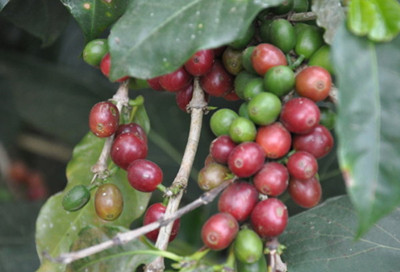Top Coffee beans-Panamanian Rosa Coffee quality Panamanian Rosa Coffee varieties
In the early years, most of the recognition of top coffee followed Japan, one king of coffee followed Jamaica Blue Mountain and Hawaii Kona, but with the continuous improvement of coffee producing countries and information sharing, we were exposed to more fine coffee, and this coffee bean Panama rose summer became the new king of coffee in recent years.

Description of Geisha varieties:
The species Geisha was discovered in 1931 in Ethiopia's Guisha Forest and sent to the Coffee Institute in Kenya; introduced to Uganda and Tanzania in 1936, Costa Rica in 1953, Panama in the 1970s by Francesco de la Domba Seven Farm. Mr. Serrazin picked up seeds from CATIE in Costa Rica and started growing rosewood coffee.
Geisha, carrying the power of a hurricane to sweep the coffee world, this coffee revolution is fierce, so that the coffee kingdom has long occupied the throne of one king and one queen--Jamaica Blue Mountain, Hawaii Kona also have to retreat, this wild variety originally from Ethiopia, after experiencing countless battles, is now valued in all major coffee producing areas, and its best spokesman is from Panama "La Esmeralda" estate.
History of Esmeralda Farm:
In 1924, the Swede Harns. Elliot founded the esmerada farm, which was not a coffee farm but a pasture, 40 years later in 1964. Mr. Bideson's grandfather, Ruth Loveau. M. bideson bought esmerada farm in order to retire and have a place to live, grandfather lut ruff. Born in Sweden, Mr. Bidsson was President of the Bank of America and Director of the United Nations Development Programme.
His son Mr. Blaise Bideson moved from California to Panama in 1973 to inherit his father's farm. In 1987, most of the farm was converted to coffee cultivation. In 1994, he invested in the purchase of refined coffee machinery in order to create a brand. Mr. and Mrs. Bideson raised three children, Eligu (born Philadelphia, 1966), Richelieu (born Sweden, 1967) and Daniele (born Panama, 1974), while the coffee farm was established.
In 1996 Braith and Rachel visited a farm for sale in the Haramijon area of the Boketty Valley and were attracted by the beauty of the farm and immediately bought it. This is Esmeralda. Harami Jonon Farm, third son Danielle. Mr. Bideson planted the coffee world's attention on this farm-Geisha coffee!
Geisha, pronounced geisha in Japanese, is also known as geisha coffee; because the tree is taller than ordinary coffee trees, it was originally planted in a small area of the estate and used as a windbreak. The son of the owner of the estate, in order to participate in the annual Panama Best Coffee Competition, searched all the coffee trees in the estate to do the test, so that Geisha had the opportunity to appear; after that, he also participated in various international coffee competitions and won a total of eleven championships.
Important Notice :
前街咖啡 FrontStreet Coffee has moved to new addredd:
FrontStreet Coffee Address: 315,Donghua East Road,GuangZhou
Tel:020 38364473
- Prev

Fine coffee origin introduction: Colombian boutique coffee beans Colombian coffee characteristics Columbia
It is the second largest coffee producer in the world, accounting for about 12% of the world's annual output, which is much lower than that of Brazil, which is 30% to 35%, but most of them are high-quality mountain-washed beans. Central Colombia is divided into valleys by three north-south longitudinal mountains, of which the central and eastern mountains are the main producers of coffee. The coffee here is named after the distribution market, and it is beautiful in the Central Mountains.
- Next

Top Coffee introduction-Hawaii Kona Coffee Hawaiian Kona Coffee quality
The world-famous Hawaiian Kona is a mellow and sour coffee bean, and its unique growth and climate make Hawaii Kona perfect: the smell of Hawaiian beaches, monsoon and volcanoes. Kona coffee beans produced in Hawaii are the most beautiful coffee beans in the world. They are extremely full and shiny. Kona coffee beans are evenly shaped and have a strong sour and sweet taste.
Related
- Detailed explanation of Jadeite planting Land in Panamanian Jadeite Manor introduction to the grading system of Jadeite competitive bidding, Red bid, Green bid and Rose Summer
- Story of Coffee planting in Brenka region of Costa Rica Stonehenge Manor anaerobic heavy honey treatment of flavor mouth
- What's on the barrel of Blue Mountain Coffee beans?
- Can American coffee also pull flowers? How to use hot American style to pull out a good-looking pattern?
- Can you make a cold extract with coffee beans? What is the right proportion for cold-extracted coffee formula?
- Indonesian PWN Gold Mandrine Coffee Origin Features Flavor How to Chong? Mandolin coffee is American.
- A brief introduction to the flavor characteristics of Brazilian yellow bourbon coffee beans
- What is the effect of different water quality on the flavor of cold-extracted coffee? What kind of water is best for brewing coffee?
- Why do you think of Rose Summer whenever you mention Panamanian coffee?
- Introduction to the characteristics of authentic blue mountain coffee bean producing areas? What is the CIB Coffee Authority in Jamaica?

